Create+Engage: How Public Art Engages All of Us
September Month of Action: an invitation to look around our communities for inspiration.
Hello friends,
Welcome to the second installment of our Create+Engage Month of Action! Every Tuesday this month we’re focusing on a different way to take creative action, in the hopes that it inspires you to creatively engage in your own communities. Because remember: art and creativity matter!
This week, we’re exploring the power of public art in our communities. We also have a Q&A with artist and climate activist Monica Jahan Bose, who created the immersive public art experience Storytelling with Saris. If you want to check-out past topics, visit the Create+Engage section on Substack.
This whole Create+Engage endeavor is entirely collaborative, and this week’s installment was penned by
. If you haven’t seen her visual work before, be sure to check that out too.Before we jump in, I wanted to note an important correction from last week’s newsletter. It was brought to our attention that one of the images that we used (from the Bread and Roses strike) was in fact a doctored one. I am very embarrassed for not catching it in the first place, so thank you so much to the reader who brought it to our attention. We have updated the image and apologize for the error. An excellent reminder in the day and age of scrolling and quickly looking at visuals that our attention is required at all times.
Which of course is a great segue into today’s exploration of public art—a creative invitation to not just pass through but to pause, reflect, and pay attention.
-Anna
Additional Art + Creative Engagement
I made a Vote Postcard Pack if you want one.
Artists Take Action auction launches on September 12th! We hope some of you submitted. Keep any eye on their Instagram to donate to this month’s auction.
How Public Art Engages All of Us
By Anjelika Deogirikar Grossman
When you think of public art, what comes to mind? Murals or light-projection installations, billboards or monuments, or perhaps festivals or community events.
What makes public art so appealing?
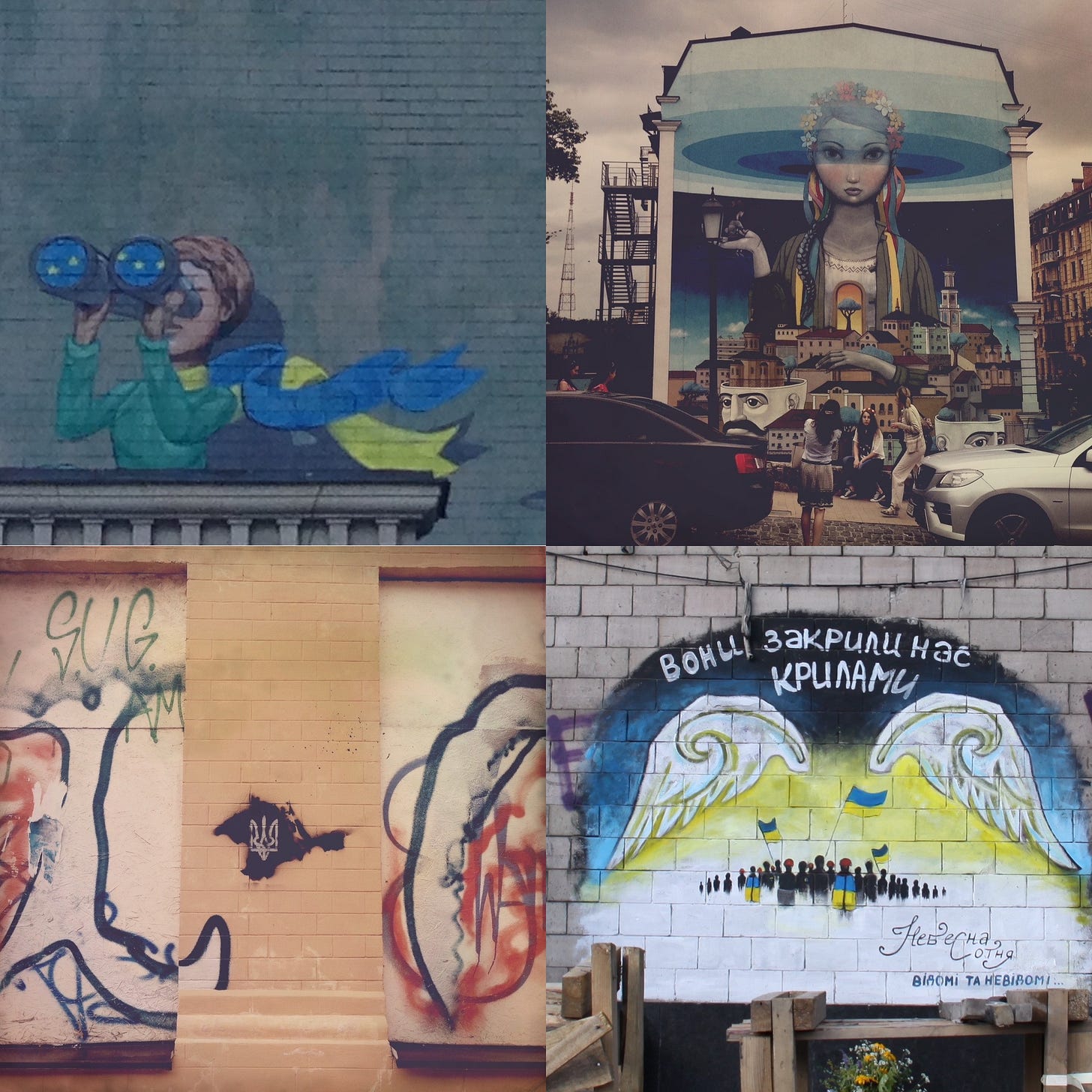
While I’ve been known to stop in the street to capture photos of street art or graffiti, I distinctly remember when I noticed public art with a new lens. In the summer of 2014, we were traveling back to Kyiv, Ukraine to visit family. There had been so many historic events that had happened in the previous months—Euromaidan, Revolution of Dignity and the illegal Russian occupation and annexation of parts of Ukraine. I remember noticing art around the city with a new eye—the streets were filled with art and installations that encapsulated Ukrainian pride, culture and values. A decade later, these images are stuck in my mind and make me wonder: how might we use public art to reflect the values of our communities?
As we explore public art this week, I hope this is an invitation to pause and notice small or large displays of public art in our communities or those we might be visiting, or to imagine where you'd like to see public art in your community in the future.
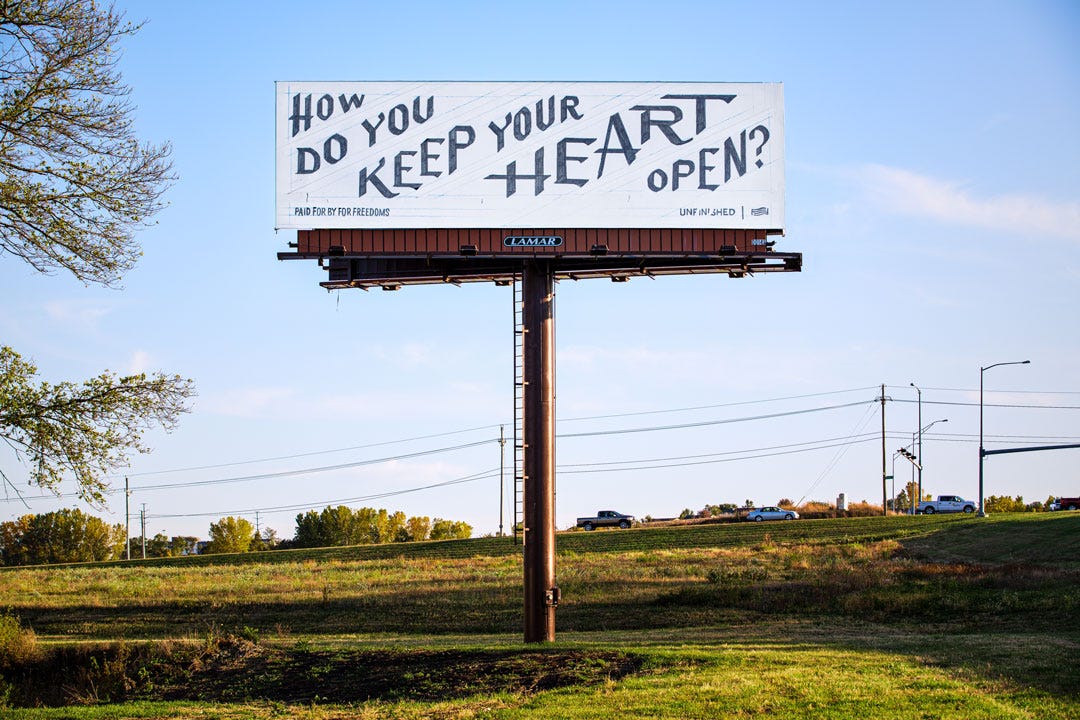
Public art might be temporary or permanent.
The organization For Freedoms partners with artists to expand the discourse around civic engagement and what participation in our democracy might look like. Recently, For Freedoms partnered with artists to highlight messages that would inspire curiosity around the national elections during the Republican National Convention in Milwaukee, WI and the Democratic National Convention in Chicago, IL. Past Create+Engage speaker Christine Wong Yap’s billboard design “How Do You Keep Your Heart Open? (For Susan)” from 2020 was used again this year.
Similarly, SaveArtSpace partners with curators and artists on specific activations to create urban art galleries on billboards and bus stops. Most recently, Michele Pred, Swedish-American conceptual artist, was the curator of Vote for Democracy public art during the Republican National Convention in Milwaukee, WI. In 2022, she curated the national billboard exhibition Vote for Abortion Rights.
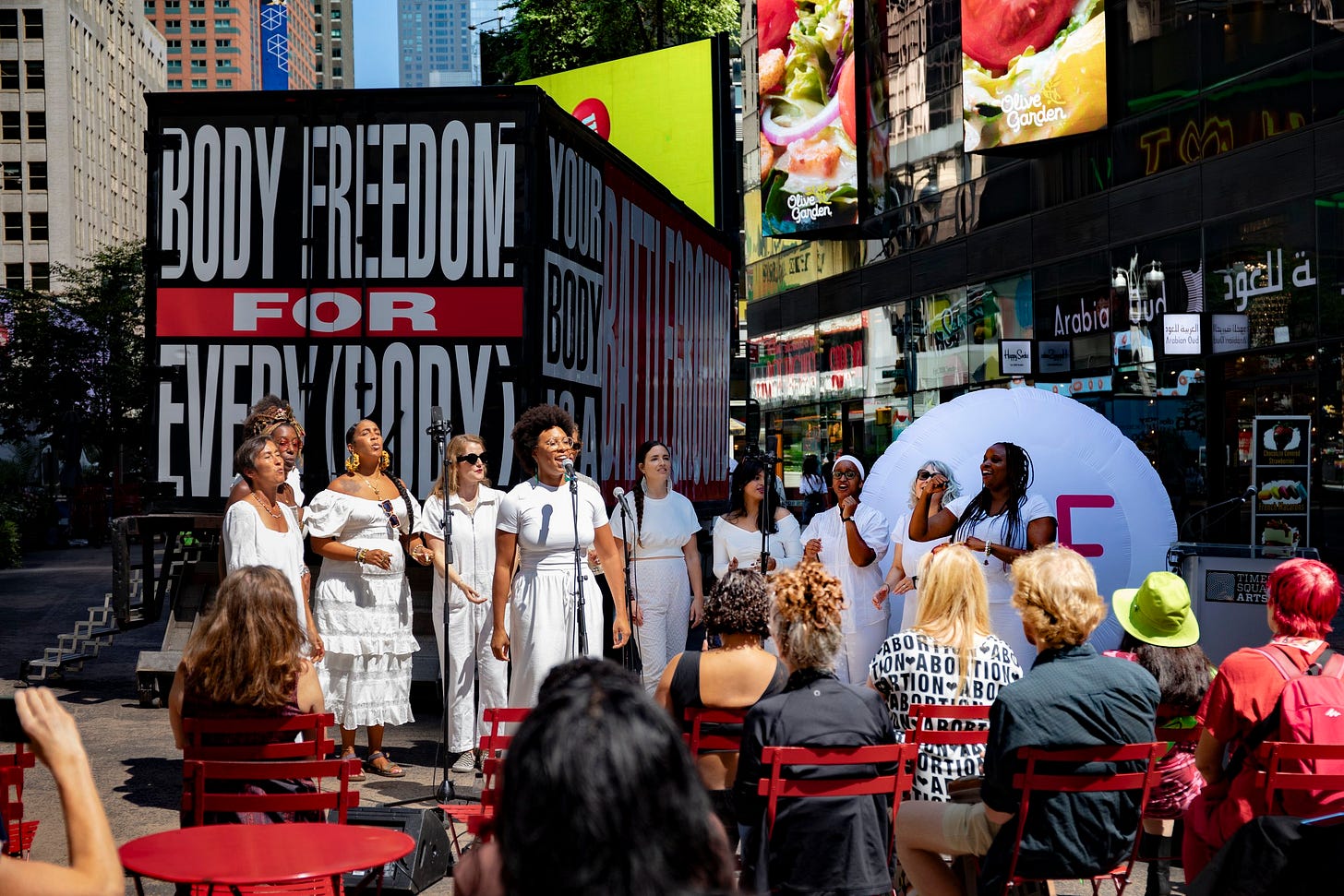
Public art might serve to address specific topical issues.
This month, The Body Freedom Truck launched its nationwide tour part of the BODY FREEDOM FOR EVERY(BODY) campaign to promote dialogue on bodily autonomy. Organized by the Project For Empty Space, this mobile exhibition hopes to specifically bring more attention to the need for “safe, legal, and accessible health care.”
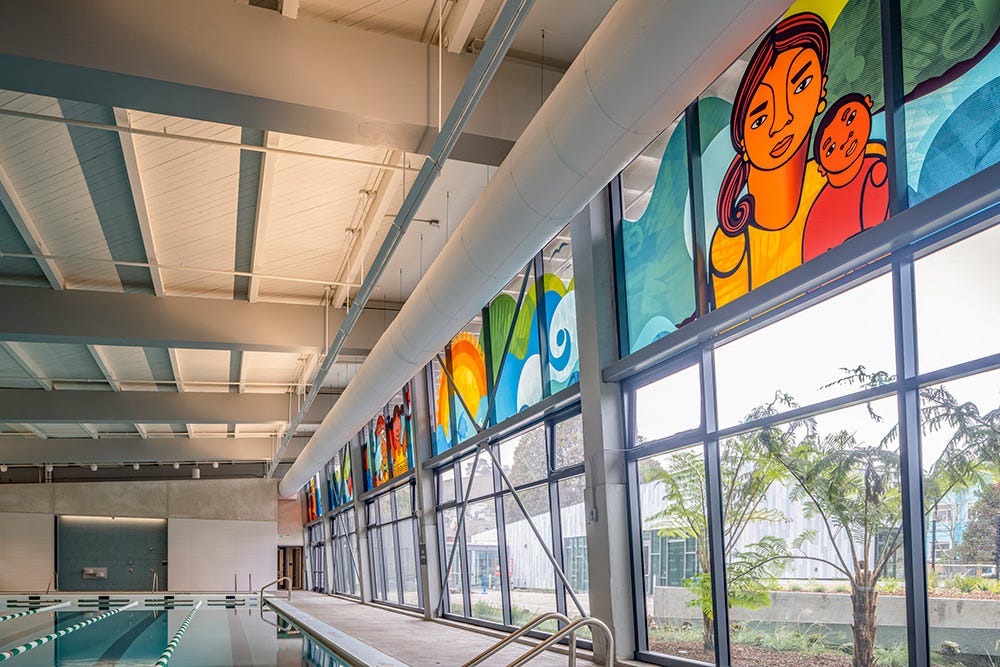
Additionally, public art can be a more permanent reflection of a community—its people, its values, and its aspirations.
Oakland-based artist Favianna Rodriguez, an interdisciplinary artist, cultural strategist, and entrepreneur, creates permanent and temporary art installations to explore topics of migration, gender justice, racial equity, and climate change. In 2020, she designed the glass mural installation Santuario (which translates to “sanctuary”) for the Garfield Public Pool in San Francisco, CA to celebrate Latinx heritage and community in San Francisco’s Mission District.

Perhaps most importantly, public art has the power to make us pause in our daily lives and reflect—and in many cases, encourage us to take action in our communities.
CREATIVE PROMPT
Here is the challenge for you this week.
Do a public art “Scavenger Hunt.” If you are able to, take time to observe your neighborhood, community, or an adjacent area. Do you notice any examples of public art?
How do they make you feel? What is the issue or message you think is being captured through this work?
If you were not able to find any public art, are there spaces you visited that you wish there was art or some type of immersive experience or community event?
If you could contribute to public art in your community (either temporary or permanent), what would it be? What would be a message or action would you be encouraging others about?
Share your reflections with the Creative Fuel community on the Create+Engage padlet!
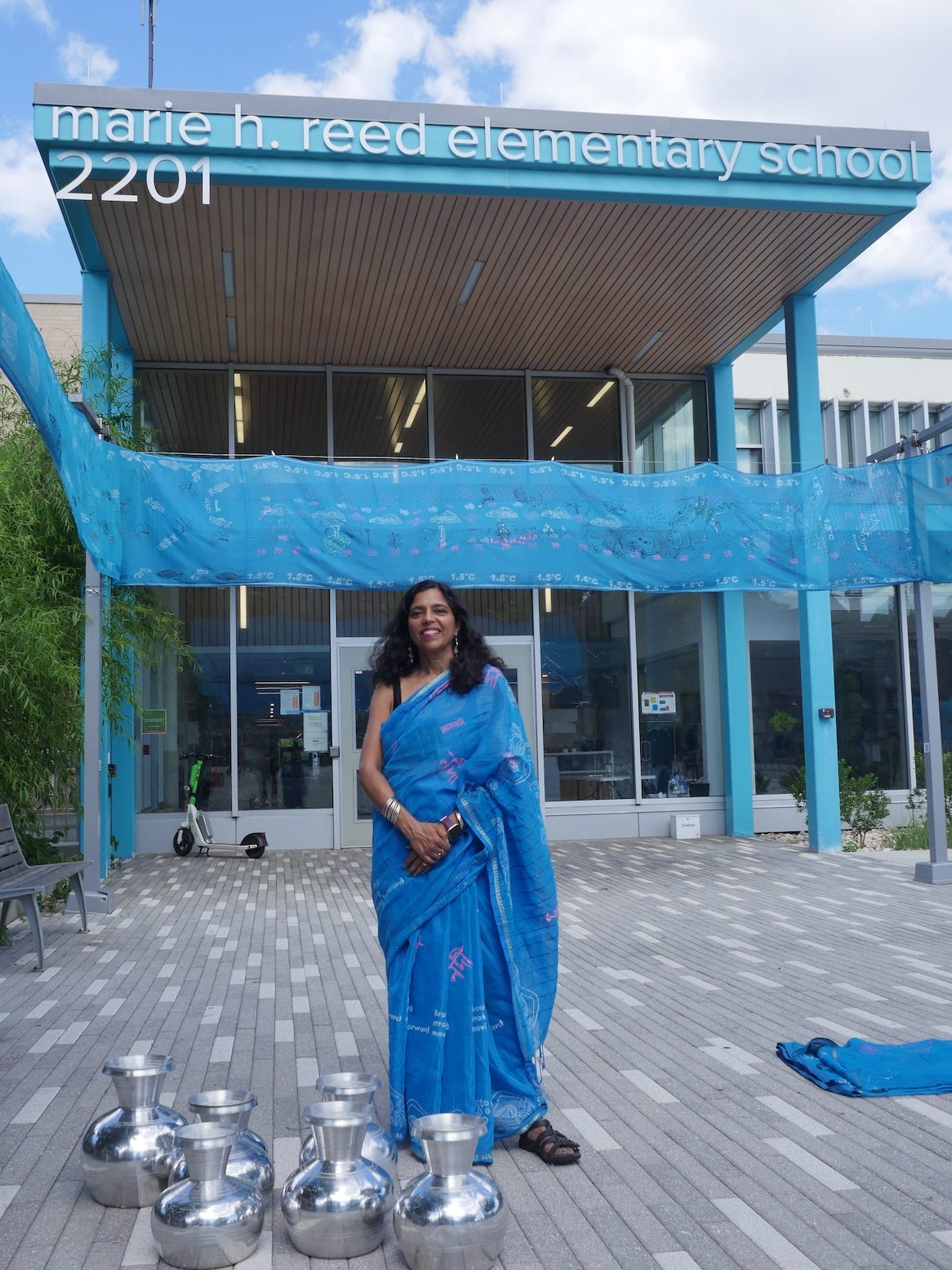
Storytelling with Saris: Q&A With Monica Jahan Bose
Monica Jahan Bose is a Bangladeshi-American artist and climate activist whose work spans painting, printmaking, performance, film, and interdisciplinary projects. Her social practice work highlights the intersection of climate, racial, gender, and economic injustice through co-created workshops and temporary public art installations and performances.
She is the creator of Storytelling with Saris, a long-term art and advocacy project with her ancestral village of Katakhali, Bangladesh. This past summer, she created the public art installation “SWIMMING,” which created the shape of a swimming pool and a huge wave with blue saris at Marie Reed Plaza in Washington, DC, transforming the Adams Morgan neighborhood for two weeks in June 2024.
Earlier this year, she participated in engagements in Bangladesh as part of the US Art in Embassies artist exchange, including sari workshops, a public lecture, and a solo exhibition called “Choloman/Ongoing.” The exhibition featured cascading saris and an immersive three-channel video installation addressing impacts of climate on agriculture in Bangladesh, the US, and France through performance and testimonials. To learn more about the Art in the Embassies program head here. The women from Katakhali who were collaborators with Monica on this project traveled to Dhaka to join the exhibition and do a performance with her.
She recently exhibited at South Asia Institute in Chicago the debut show of her new feminist collective called The Paglees, which means “crazy women” in several South Asian languages. In May 2025, The Paglees will exhibit at McColl Center in Charlotte, North Carolina.
We caught up with Monica to learn a little more about her creative approach to public art.

What inspired you to start Storytelling with Saris?
I wanted to start a collaborative art project that could engage communities to take action on climate change. My family is from Katakhali Village, on Barobaishdia Island in the Bay of Bengal in Bangladesh. Katakhali is on the frontlines of climate change, facing salt incursion into croplands, rising sea levels, changing weather and untimely rain, all resulting in crop failures, loss of farm animals, and food insecurity.
Starting in 2006, I was making portraits of these resilient women of Katakhali, along with a series of climate paintings about storms and sea level rise. Around 2011, it occurred to me that it would be more interesting to co-create art with the women of Katakhali. I was using the motif of the sari and actual sari fabric in my work for many years. I decided that the six-yard-long sari itself would be a perfect material and storyboard for the collaborative art because the sari is precolonial and also a sustainable material that is always reused and recycled for generations.
I launched Storytelling with Saris in 2012, after a year of research and planning. My plan was to continue the project for a decade to see how climate and the Katakhali women’s lives evolve. I have observed drastic changes in the last 12 years, and the project continues because more and more people in the US and around the world have joined workshops where we co-create saris, make climate pledges, write climate justice poetry and try to take community action on climate. The project will continue for as long as I can keep going.
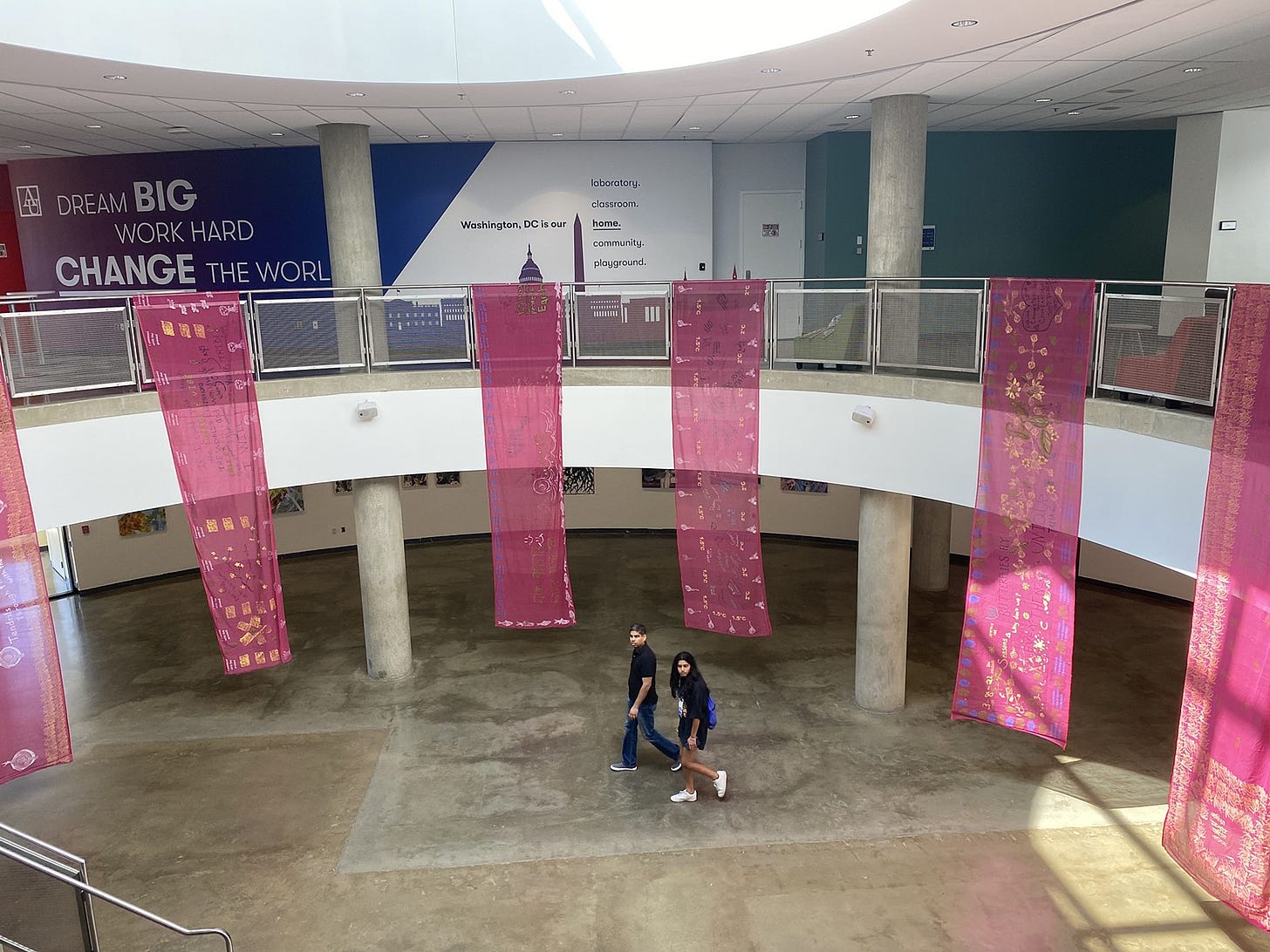
What does it mean to be creative?
Being creative means listening to problems and issues around us and finding innovative solutions.
What does it mean to be an artist?
Most of us have an inner artist, a creative spirit that just needs space and opportunity to express itself. An artist looks at the world through a slightly different lens, noticing the magic of the world around us.
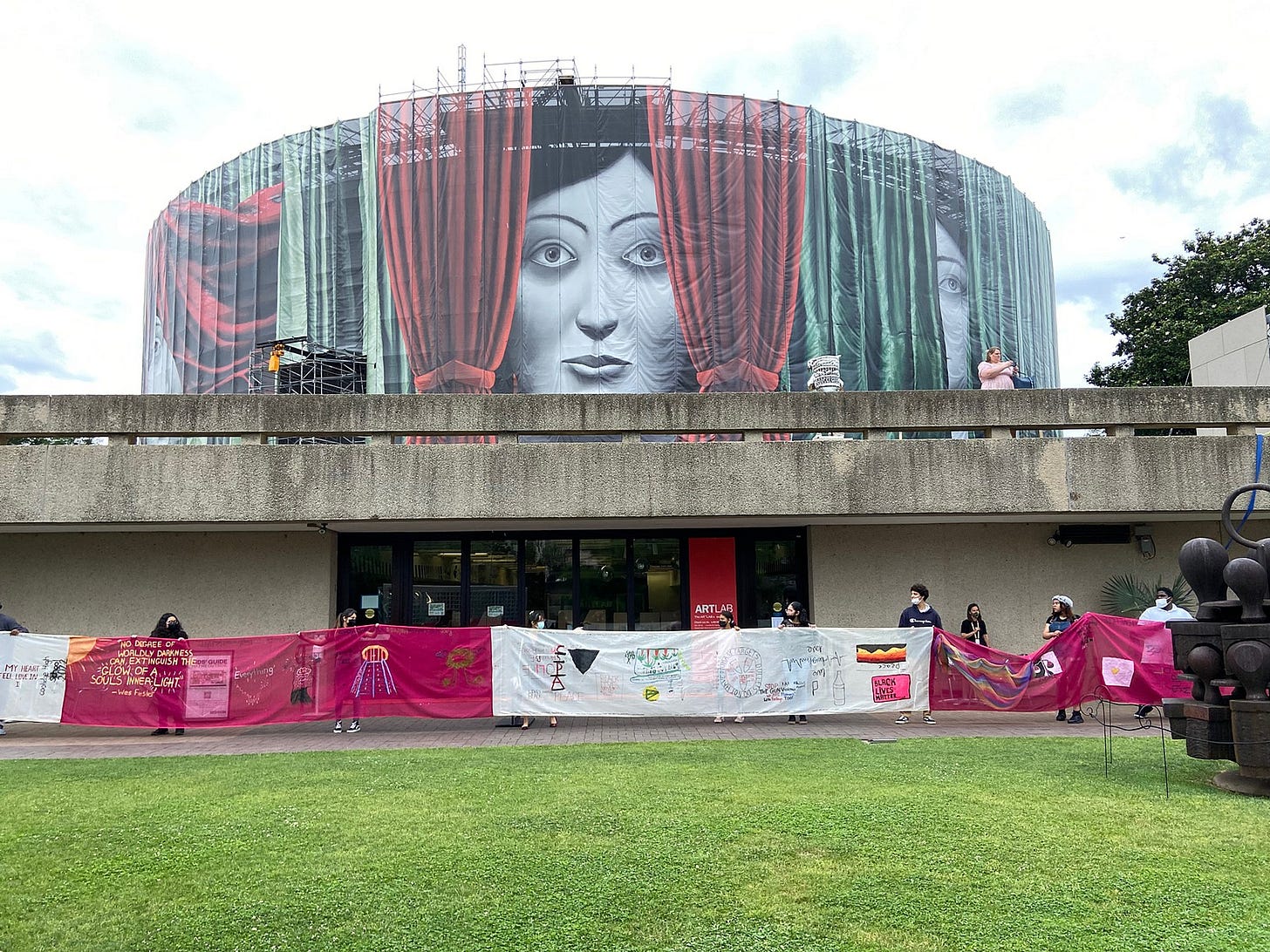
What is a recommended “micro-action” — a small action that we can take?
The main factors that affect climate change in the US are heating/electricity in our home and offices and transportation. A small action we can take is to use metro more and drive/Uber less. Another is to get a programmable thermostat and keep the home cooler in winter in and warmer in summer by two degrees.
Thank you Monica!
UPCOMING CREATE+ENGAGE WORKSHOPS
Thursday September 26, 5-6pm PT: Create+Engage Studio Session
This will be a little more casual than our usual Create+Engage workshops, and we’re hoping that it will encourage you to use this time to come and work on some type of creative action. Make and write some postcards, draw some political poster designs, etc. Sign up here.
Wednesday October 16, 5-6:30pm PT: Create+Engage October Session
We’ll be announcing guest artists soon. Sign up here.
Wednesday November 13, 5-6:30pm PT: Create+Engage November Session
Yup, the election will be behind us before we know it. Save the date for now, and more info to come.
All of this programming is made possible thanks to paid subscribers and direct financial supporters. Thank you for making this possible!
Do you enjoy Creative Fuel? You can support this work by becoming a paid subscriber. You can also order something in my shop, attend one of my workshops or retreats, or buy one of my books. Or simply share this newsletter with a friend!






